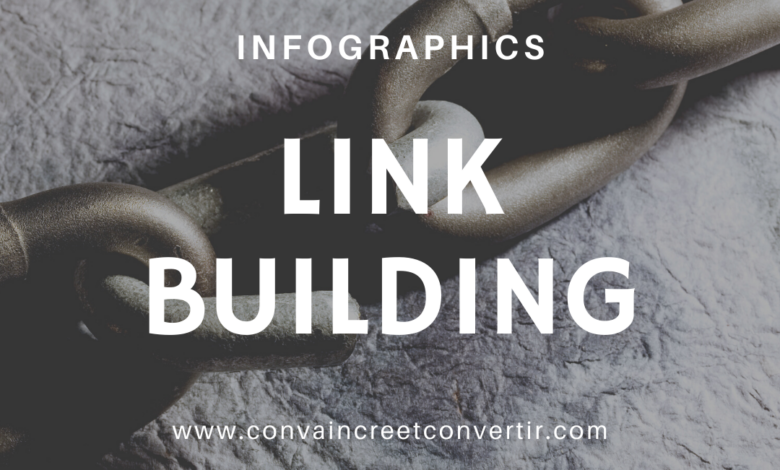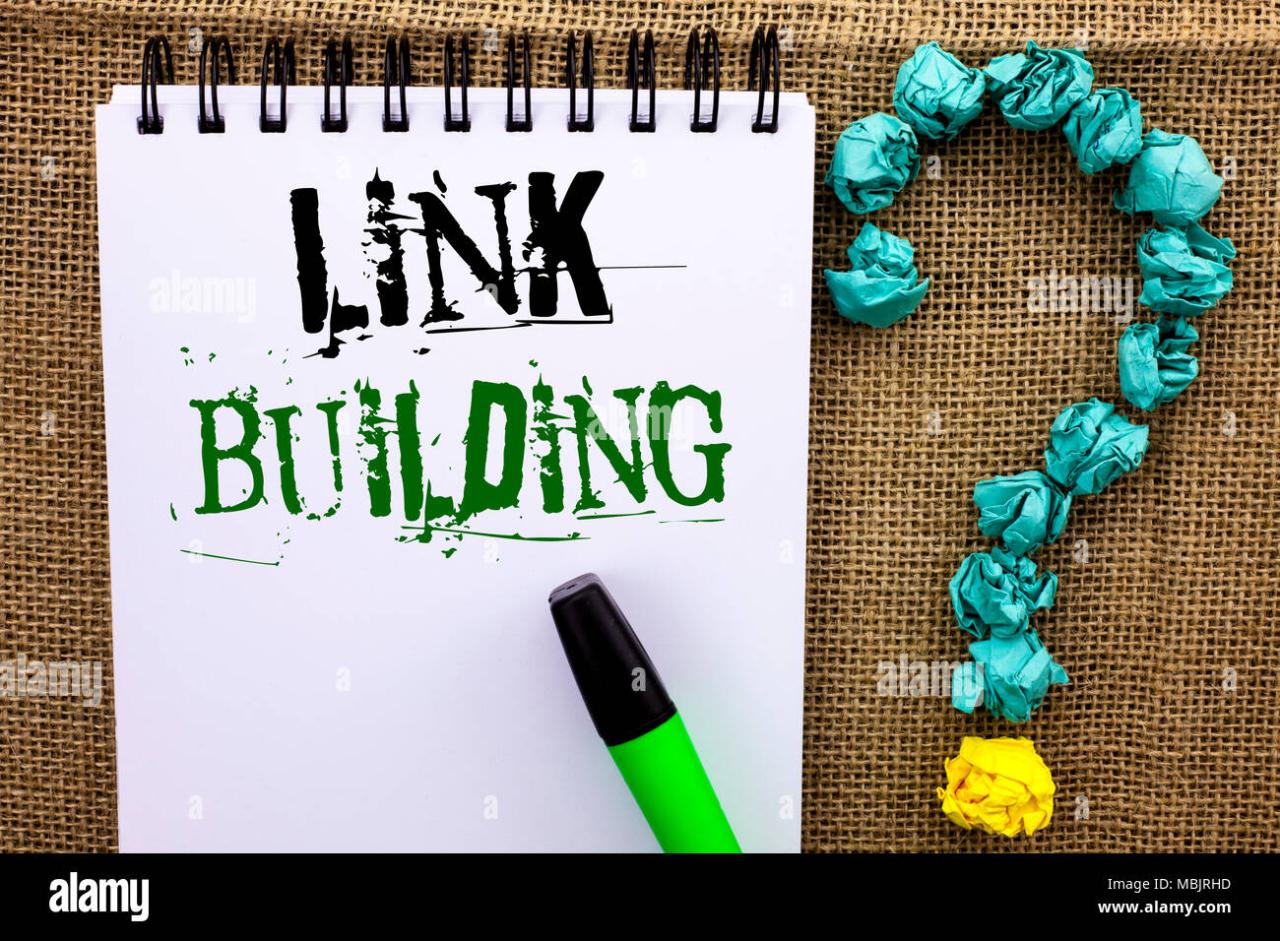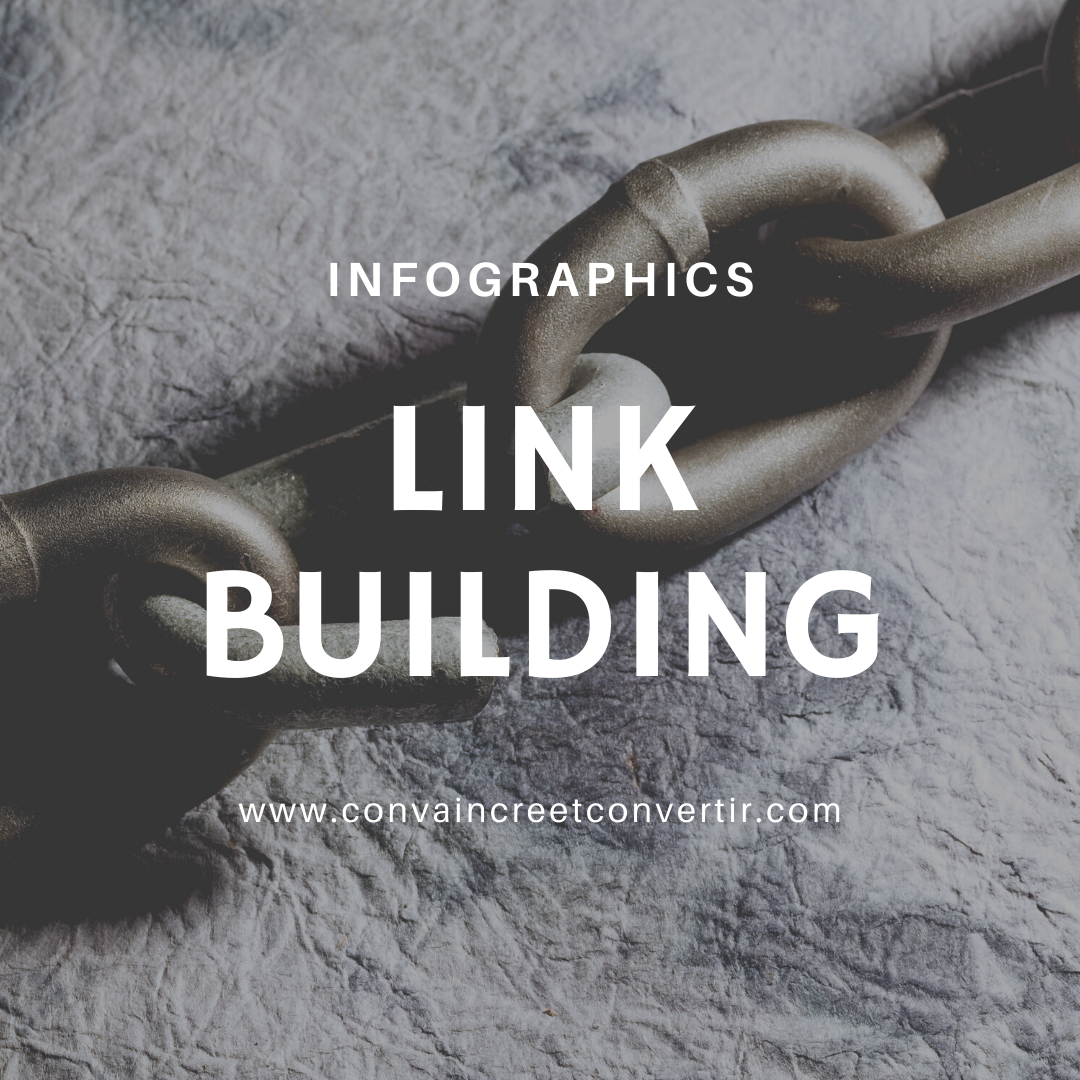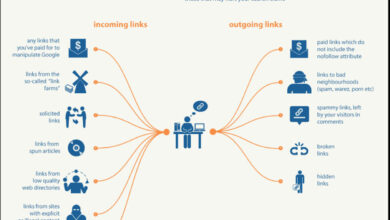
What is Link Building A Beginners Guide
What is link building? It’s the cornerstone of a successful online presence, a strategic process of earning high-quality links from other websites to your own. Think of it like getting recommendations from trusted friends – each link acts as a vote of confidence, telling search engines your site is valuable and trustworthy. This boosts your search engine rankings, driving more organic traffic to your website and ultimately increasing your visibility and reach.
We’ll explore the different types of links, effective strategies, and the importance of ethical practices.
This guide will unravel the mystery behind link building, explaining everything from the basics to advanced techniques. We’ll cover different types of links, how to build them ethically, and how to measure your success. Get ready to dive in and learn how to harness the power of backlinks to skyrocket your online success!
Defining Link Building

Source: alamy.com
Link building, in its simplest form, is about getting other websites to link to yours. It’s like getting recommendations or endorsements for your website from other reputable sources. Think of it as building a network of trust and authority online. The more high-quality websites link to yours, the more Google and other search engines see your site as valuable and trustworthy, leading to higher rankings in search results.A concise definition for beginners: Link building is the process of acquiring hyperlinks from other websites to your website to improve its search engine ranking and online visibility.
Examples of Successful Link-Building Strategies
Effective link building isn’t about quantity; it’s about quality. Focusing on earning links from relevant and authoritative websites is far more beneficial than accumulating hundreds of low-quality links from irrelevant sources. Here are three examples of successful link-building strategies:
First, consider guest blogging. This involves writing high-quality content for other blogs in your niche. By including a link back to your website within your author bio or within the content itself (where appropriate), you’re establishing your expertise while simultaneously gaining a valuable backlink. For instance, a gardening blog could write a guest post for a popular home improvement website, linking back to their own site for readers interested in learning more about specific gardening techniques.
Second, broken link building is a powerful technique. This involves finding broken links on relevant websites and suggesting your own content as a replacement. By identifying broken links, you are offering a solution to a problem the website owner has, making it more likely they’ll accept your suggestion. Imagine finding a broken link on a website about travel guides, then providing your own updated guide on the same topic and offering it as a replacement.
The website owner would likely appreciate the help and link to your content.
Finally, resource page outreach is an effective strategy. Many websites maintain resource pages—compilations of helpful links related to their industry. By identifying relevant resource pages and reaching out to their owners, you can suggest your website as a valuable addition to their list. For example, a website selling eco-friendly products could reach out to a blog about sustainable living, proposing their website as a valuable resource for readers seeking environmentally conscious options.
The blog owner may readily add the link to their resource page, boosting the website’s visibility and credibility.
Types of Links
Understanding the different types of links is crucial for effective link building. Not all links are created equal; they carry varying levels of weight and influence in the eyes of search engines like Google. This impacts how your website is ranked in search results, so choosing the right types of links is vital for your strategy.
Dofollow and Nofollow Links
Dofollow and nofollow attributes are directives that tell search engines how to handle a link. A dofollow link passes link juice (authority and ranking power) from the linking page to the linked page. A nofollow link, on the other hand, doesn’t pass link juice. While nofollow links don’t directly boost your rankings, they still offer value by driving referral traffic and potentially increasing brand awareness.
Search engines use nofollow links to identify potentially manipulative link schemes.
Internal and External Links
Internal links connect pages within your own website, while external links connect to pages on other websites. Both are essential for , but they serve different purposes. Internal links improve site navigation, distribute link juice within your site, and help search engines understand the relationship between your pages. External links, when sourced from high-authority websites, significantly boost your site’s credibility and authority in the eyes of search engines.
Think of them as endorsements from reputable sources.
Table Comparing Link Types
| Link Type | Attribute | Impact on Ranking | Benefits |
|---|---|---|---|
| Dofollow | rel="dofollow" (implied if no rel attribute) |
Positive; passes PageRank and increases ranking potential. | Improved search engine rankings, increased website authority, higher visibility. |
| Nofollow | rel="nofollow" |
Neutral; does not directly pass PageRank. | Increased referral traffic, improved brand awareness, diversification of backlinks, avoids potential penalties for manipulative link building. |
| Internal | N/A (within your website) | Positive within your website; distributes link equity and improves site architecture. | Improved user experience, enhanced site navigation, improved targeting within the site, better crawl efficiency for search engines. |
| External | rel="dofollow" or rel="nofollow" |
Positive (dofollow) or neutral (nofollow); strengthens your site’s authority and trustworthiness (dofollow from reputable sites). | Increased domain authority, improved search engine rankings, enhanced credibility and trustworthiness (particularly dofollow links from relevant, high-authority sites), increased referral traffic. |
Benefits of Link Building
Building high-quality backlinks is no longer just a good practice; it’s a necessity in today’s competitive online landscape. A strong backlink profile isn’t just about boosting your search engine rankings; it significantly impacts your overall online presence and brand authority. Let’s delve into the numerous advantages that a well-executed link-building strategy can offer.
The benefits of acquiring high-quality backlinks extend far beyond simply improving your Google rankings. It’s about building trust, credibility, and ultimately, driving more relevant traffic to your website. A robust backlink profile signals to search engines that your website is a valuable resource, worthy of higher placement in search results. This, in turn, leads to increased visibility, brand recognition, and ultimately, more business opportunities.
Improved Search Engine Rankings
A strong backlink profile is a key factor in search engine algorithms. Search engines like Google view backlinks as “votes” of confidence from other websites. The more high-quality backlinks you have from reputable sources, the higher your website is likely to rank for relevant s. This increased visibility translates directly into more organic traffic, which means more potential customers finding your business.
For example, a local bakery might see a significant increase in foot traffic after securing backlinks from relevant local directories and food blogs.
Increased Website Traffic, What is link building
Higher search engine rankings are directly correlated with increased website traffic. When your website appears higher in search results, more people are likely to click on your link. This organic traffic is highly valuable because these visitors are actively searching for information related to your business or industry. This targeted traffic is far more likely to convert into customers or leads compared to traffic from less relevant sources.
Consider a company selling sustainable clothing – backlinks from environmental blogs and ethical fashion websites would drive highly qualified traffic interested in their products.
Enhanced Brand Authority and Trust
Backlinks from authoritative websites significantly enhance your brand’s credibility and trustworthiness. When reputable sources link to your website, it signals to users that your content is valuable and reliable. This builds trust with your audience, making them more likely to engage with your content and ultimately become customers. A financial advisor, for instance, would gain significant trust by securing backlinks from well-respected financial news publications.
Improved Brand Visibility and Reach
Backlinks expose your website to a wider audience. Each backlink introduces your website to the audience of the linking website. This increased exposure can lead to significant brand awareness and reach, especially when you acquire backlinks from websites with a large and engaged audience. Imagine a small artisan jewelry maker gaining backlinks from large fashion magazines – their reach and brand visibility would dramatically increase.
Higher Click-Through Rates (CTR)
Websites with a strong backlink profile often experience higher click-through rates (CTR) in search engine results pages (SERPs). This is because search engines often prioritize websites with a high number of high-quality backlinks, leading to a more prominent placement in the search results. A higher ranking translates to a higher probability of users clicking on your website link. A local plumber, for instance, would benefit from higher CTR if they have backlinks from several local community websites.
Key Metrics Improved by a Strong Backlink Profile
A strong backlink profile positively influences several key metrics that are crucial for website success. These metrics provide valuable insights into your website’s performance and overall online health. Monitoring these metrics allows you to track the effectiveness of your link-building strategy and make necessary adjustments.
- Domain Authority (DA): A score that predicts how likely a website is to rank highly in search engine results. A higher DA signifies a more authoritative website.
- Page Authority (PA): Similar to DA, but measures the authority of a specific page on your website.
- Referring Domains: The number of unique websites linking to your site. A higher number indicates broader reach and increased authority.
- Organic Traffic: The number of visitors coming to your website from search engines. A strong backlink profile directly contributes to increased organic traffic.
- Brand Mentions: The number of times your brand is mentioned online, even without a direct backlink. This signifies brand awareness and visibility.
Link Building Strategies
Building high-quality backlinks is crucial for success. It’s not just about quantity; it’s about earning links from reputable, relevant websites that demonstrate authority and trust in your content. A strategic approach is key to achieving this. Different strategies work better for different websites and industries, so experimentation and analysis are vital.
Effective link building isn’t a quick fix; it’s an ongoing process requiring consistent effort and a keen understanding of your target audience and their online behavior. It’s about building relationships and providing value to other websites, ultimately leading to reciprocal links that boost your search engine rankings.
Guest Blogging
Guest blogging involves writing high-quality content for other websites in your niche. This allows you to reach a new audience, establish yourself as an expert, and include a link back to your website within your author bio or within the content itself. The key is to find relevant blogs with a high domain authority (DA) and a engaged readership.
Don’t just pitch any old article; tailor your content to the specific publication’s style and audience, ensuring it provides genuine value to their readers. A poorly written or irrelevant guest post can actually harm your reputation.
Broken Link Building
Broken link building focuses on identifying broken links on relevant websites and suggesting your content as a replacement. This strategy is effective because it provides immediate value to the website owner by helping them improve their site’s user experience. You can use tools like Ahrefs or SEMrush to find broken links. Once you’ve identified a broken link on a high-authority website, craft an email to the website owner, explaining the broken link and offering your content as a relevant alternative.
Ensure your content is truly superior and a fitting replacement. This approach leverages the existing authority of the target website to boost your own.
Step-by-Step Guide: Guest Blogging
- Identify Target Blogs: Research websites in your niche with high DA and a strong readership. Look for blogs that accept guest posts.
- Analyze their Content: Understand their writing style, audience, and the types of articles they typically publish. This will help you tailor your pitch.
- Develop a Compelling Pitch: Craft a professional email to the blog owner outlining your proposed article topic, highlighting its value to their audience, and showcasing your expertise. Include a brief writing sample.
- Write High-Quality Content: Create well-researched, engaging, and original content that adds value to the target blog’s readers. Follow their style guidelines meticulously.
- Submit Your Article: Submit your completed article, adhering to the blog’s submission guidelines. Be patient and follow up politely if you haven’t heard back within a reasonable timeframe.
- Promote Your Article: Once published, share your guest post on your social media channels to maximize its reach.
Comparison: Guest Blogging vs. Broken Link Building
Both guest blogging and broken link building are effective link-building strategies, but they differ significantly in their approach and execution. Guest blogging requires creating original content, pitching it to relevant websites, and building relationships with website owners. It’s a longer-term strategy focusing on building brand authority and trust. Broken link building, on the other hand, involves identifying and replacing broken links on existing websites.
This is a faster, more targeted approach, focusing on quick wins by leveraging existing content.
| Feature | Guest Blogging | Broken Link Building |
|---|---|---|
| Time Investment | High | Moderate |
| Effort Level | High (content creation, pitching) | Moderate (research, outreach) |
| Scalability | Moderate | High (automation possible) |
| Link Quality | Generally high (from relevant sites) | Variable (depends on target website) |
Assessing Link Quality
Building high-quality backlinks is crucial for success. It’s not just about quantity; the quality of your backlinks significantly impacts your website’s ranking in search engine results pages (SERPs). A single high-quality link from a reputable website can be far more valuable than hundreds of low-quality links from spammy sources. Understanding what constitutes a good backlink is essential for any effective link-building strategy.The factors determining the quality of a backlink are multifaceted.
Essentially, search engines like Google assess backlinks based on the authority and relevance of the linking website. A link from a highly authoritative website, such as a government agency or a well-established news publication, carries more weight than a link from a low-authority website with little online presence. Relevance also plays a significant role; a link from a website related to your industry is more valuable than a link from a completely unrelated site.
Technical factors, such as the anchor text used and the placement of the link on the page, also influence the backlink’s perceived quality.
High-Quality and Low-Quality Backlink Examples
High-quality backlinks typically come from authoritative, relevant websites with a strong online reputation. For example, a link from a well-known industry blog with high domain authority (DA) and a large, engaged audience would be considered a high-quality backlink. Another example could be a mention on a reputable news website, where the link is naturally embedded within the context of an article relevant to your business.
In contrast, low-quality backlinks often originate from websites with low domain authority, irrelevant content, or a history of spammy practices. Examples include links from comment sections on irrelevant blogs, links from article directories with low-quality content, or links purchased from link farms. These links often do not provide any real value and can even harm your website’s ranking.
Backlink Quality Checklist
Before accepting a backlink, it’s vital to assess its quality. Here’s a checklist to help you evaluate potential backlinks:
It’s crucial to thoroughly investigate each aspect to ensure the backlink enhances, rather than detracts from, your website’s profile.
- Website Authority: Check the website’s domain authority (DA) and domain rating (DR) using tools like Ahrefs or SEMrush. High DA/DR scores indicate a more authoritative website.
- Website Relevance: Does the website’s content align with your industry or niche? A relevant link carries more weight than an irrelevant one.
- Link Context: Is the link naturally embedded within the content, or does it look unnatural or spammy? Natural links are more valuable.
- Anchor Text: Is the anchor text relevant and diverse? Over-optimization of anchor text (using the same repeatedly) can be a red flag.
- Website Traffic and Engagement: Does the website receive significant traffic and have a high level of user engagement (comments, shares, etc.)? High traffic and engagement suggest a more reputable website.
- Website’s Backlink Profile: Analyze the website’s backlink profile to identify any potential red flags, such as a high number of low-quality backlinks.
- Website’s Content Quality: Is the website’s content high-quality, original, and informative? Low-quality content can negatively impact your website’s .
Tools and Resources
Building high-quality links requires more than just guesswork; it demands strategic planning and the effective use of specialized tools. These tools streamline the process, allowing you to identify opportunities, analyze your progress, and ultimately, build a stronger backlink profile. Choosing the right tools and mastering their use is crucial for efficient and effective link building.
This section explores some essential tools for link building and analysis, providing a brief overview of their functionalities and best practices for their effective implementation. Remember, the best toolset will depend on your specific needs and budget.
Link Building and Analysis Tools
Several tools are available to assist with various aspects of link building, from identifying potential link partners to monitoring your backlink profile’s growth and quality. Choosing the right tool often involves considering factors like cost, ease of use, and the specific features you need. Below are some examples of popular and effective tools.
- SEMrush: A comprehensive toolkit offering a range of features, including backlink analysis, competitor research, tracking, and site audit capabilities. SEMrush’s backlink analysis tool allows you to see your backlinks, your competitors’ backlinks, and identify potential link building opportunities. Best practice involves regularly monitoring your backlink profile for toxic links and opportunities to earn new, high-quality backlinks.
- Ahrefs: Similar to SEMrush, Ahrefs is a powerful suite with robust backlink analysis capabilities. Its features include exploring backlinks, identifying broken links, and analyzing your competitors’ link profiles. Effective use involves focusing on the quality of backlinks, not just the quantity. Ahrefs’ Site Explorer allows for detailed analysis of individual domains, helping you prioritize outreach efforts.
- Moz: Known for its Domain Authority (DA) and Page Authority (PA) metrics, Moz provides valuable insights into website authority and link quality. Moz Link Explorer allows you to analyze your own and your competitors’ backlink profiles, identifying potential opportunities and areas for improvement. Best practices include using Moz’s data to inform your link building strategy, focusing on acquiring links from high-DA sites.
- Google Search Console: While not strictly a link building tool, Google Search Console provides invaluable data on your website’s backlinks. It shows you which sites link to your website, the anchor text used, and the overall health of your backlink profile. Effective use involves regularly checking for disavowable links and ensuring your sitemap is submitted for optimal indexing.
- Screaming Frog: A website crawler that allows you to identify broken links on your website and your competitors’ websites. This information is crucial for link building as you can identify broken links and reach out to website owners to offer updated links to your relevant content. Best practice involves using the data to identify potential link building opportunities through broken link building.
Avoiding Black Hat Techniques
In the quest for higher search engine rankings, it’s tempting to cut corners. However, employing black hat link-building techniques is a risky strategy that can severely damage your website’s reputation and online presence. These manipulative tactics violate search engine guidelines and can lead to significant penalties, ultimately hindering your long-term success. Understanding these techniques and their consequences is crucial for building a sustainable and ethical online strategy.Black hat link building involves using deceptive or manipulative methods to artificially inflate a website’s link profile.
These methods are designed to trick search engines into thinking a website is more popular and authoritative than it actually is. The short-term gains are often overshadowed by the long-term repercussions, which can include significant ranking drops, de-indexing from search results, and even permanent banishment from search engines. Let’s explore some common examples.
So, what is link building? Basically, it’s all about getting other websites to link back to yours – think of it like building a web of recommendations. A great way to boost your backlink profile is by collaborating with YouTubers, which is why checking out this guide on getting it on with youtube is a smart move.
Strong YouTube presence can significantly improve your link building strategy, leading to better search engine rankings.
Common Black Hat Link Building Practices
The following practices are considered black hat and should be strictly avoided:
- Buying Links: Purchasing links from link farms or other websites solely for the purpose of boosting rankings. This is a clear violation of search engine guidelines.
- Link Schemes: Participating in schemes designed to artificially inflate link profiles, such as reciprocal linking (exchanging links with many websites without relevance), or participating in link networks where websites link to each other solely for purposes.
- Comment Spam: Leaving irrelevant or low-quality comments on blogs and forums solely to include a link back to your website. This often involves using automated tools to spam multiple sites simultaneously.
- Hidden Text/Links: Using text or links that are invisible to users but visible to search engines. This is a form of deceptive practice designed to manipulate search engine rankings.
- Cloaking: Serving different content to search engines than what is shown to users. This practice attempts to deceive search engines into thinking the website is something it is not.
- Directory Submissions: Submitting your website to numerous low-quality or irrelevant online directories without regard for the relevance or authority of the directory itself. Many of these directories are simply link farms in disguise.
Penalties for Black Hat Link Building
The penalties for engaging in black hat link building can be severe and far-reaching. These penalties are not limited to a simple ranking drop; they can significantly impact a website’s overall visibility and online reputation.
- Manual Penalty: Search engines may issue a manual penalty, which involves a significant drop in rankings or even complete removal from search results. Recovering from a manual penalty often requires significant effort and time.
- Algorithmic Penalty: Search engines employ algorithms to detect black hat techniques. If caught, a website may experience a significant drop in rankings without explicit notification. This can be more difficult to diagnose and rectify.
- De-indexing: In extreme cases, a website might be entirely de-indexed, meaning it will no longer appear in search engine results. This effectively renders the website invisible to users.
- Reputation Damage: Even if a website avoids penalties, engaging in black hat techniques can severely damage its reputation. Users may lose trust in the website, and it might become associated with spam or untrustworthy practices.
Negative Consequences of Manipulative Link Building
Employing black hat tactics not only risks penalties from search engines but also carries a multitude of negative consequences. For instance, a website that buys links might end up linking to sites with low-quality content or even malicious websites. This association can damage the website’s reputation and potentially expose users to security risks. Furthermore, the time and resources spent on these manipulative tactics could have been invested in more effective, ethical strategies that lead to sustainable growth.
A focus on creating high-quality content, earning natural links, and providing a positive user experience is a far more rewarding and sustainable approach in the long run. Consider the example of a small business that invested heavily in buying links only to see its rankings plummet after Google detected the manipulative practices; the resulting loss of traffic and revenue far outweighed the initial investment.
This illustrates the significant risks associated with these practices.
Measuring Success

Source: pinimg.com
So, you’ve implemented your link-building strategy. Now comes the crucial part: figuring out if it’s actually working. Measuring the success of your link-building efforts isn’t just about vanity metrics; it’s about understanding what’s driving results and refining your approach for optimal performance. This involves tracking specific key metrics and interpreting the data to make informed decisions.Effective link building is a continuous process of optimization.
By regularly analyzing key performance indicators (KPIs), you can identify what’s working well, what needs improvement, and adjust your strategy accordingly. This iterative process is vital for maximizing your return on investment (ROI) and achieving your overall goals.
Key Metrics for Link Building Success
Tracking several key metrics provides a comprehensive view of your link-building campaign’s effectiveness. These metrics offer insights into both the quantity and quality of backlinks acquired. Analyzing these metrics together provides a much clearer picture than relying on a single metric alone.
Interpreting Link Building Metrics
Simply gathering data isn’t enough; you need to understand what it means. A high number of backlinks doesn’t automatically translate to higher rankings. The quality and relevance of those backlinks are equally, if not more, important. For example, a few high-quality backlinks from authoritative websites can be far more effective than hundreds of low-quality links from spammy sites. Analyzing the referring domains, their authority, and the anchor text used provides a more accurate reflection of your campaign’s success.
Data Visualization for Link Building Performance
Visualizing your data through charts and graphs can significantly improve your understanding of your link-building progress. This allows you to quickly identify trends and patterns that might be missed when looking at raw data.A line graph, for example, could track the number of backlinks acquired over time, clearly showing growth or decline. The x-axis would represent time (e.g., months), and the y-axis would represent the number of backlinks.
This visualization would immediately highlight periods of high acquisition versus slower periods.A bar chart could compare the number of backlinks from different referring domains, allowing you to easily identify your most successful outreach efforts. The x-axis would list the referring domains, and the y-axis would represent the number of backlinks from each domain.A pie chart could illustrate the distribution of backlinks by anchor text, showcasing the diversity (or lack thereof) in your anchor text profile.
Each slice would represent a different anchor text type, with the size of the slice proportional to the number of backlinks using that anchor text. This helps to quickly spot potential issues with over-optimization of specific anchor texts.
Ethical Considerations: What Is Link Building
Link building, while crucial for success, treads a fine line. The pursuit of higher rankings shouldn’t compromise ethical practices. Building a strong online presence requires a commitment to integrity and transparency, avoiding shortcuts that could harm your reputation and your website’s standing in search results. Unethical link building tactics can lead to penalties from search engines, damaging your site’s visibility and potentially causing irreversible harm to your online brand.Building links ethically ensures long-term success.
It fosters trust with both search engines and your audience, leading to organic growth and a more sustainable online presence. Focusing on quality content and genuine outreach builds a strong foundation for your website’s authority, resulting in natural and lasting link acquisition. This approach not only avoids penalties but also contributes to a healthier and more trustworthy internet ecosystem.
Best Practices for Responsible Link Building
Responsible link building prioritizes genuine relationships and the creation of valuable content. It avoids manipulative tactics and focuses on earning links naturally through the provision of helpful and insightful information. This approach reflects positively on your brand, fostering trust and credibility with your audience. By focusing on quality over quantity, you’re investing in a sustainable strategy that yields long-term benefits.
- Focus on high-quality content: Create insightful, informative, and engaging content that naturally attracts links from other websites. This is the cornerstone of ethical link building. A well-written, comprehensive guide on a relevant topic is far more likely to earn backlinks than a poorly written, thin piece of content.
- Guest blogging with relevant sites: Contribute valuable articles to authoritative blogs in your niche. Ensure the content is original and provides real value to the readers of that blog, not just a thinly veiled attempt to promote your website.
- Build relationships with other website owners: Networking within your industry fosters genuine connections that can lead to mutually beneficial link exchanges. Engage authentically, providing value to others before expecting anything in return.
- Earn links through outreach: Instead of buying links, actively reach out to relevant websites and suggest links to your content where appropriate. This direct approach demonstrates your professionalism and the value of your content.
- Disclose sponsored content: Transparency is key. Always clearly disclose any sponsored content or paid links to avoid misleading your audience and search engines.
A Code of Conduct for Ethical Link Building
This code Artikels principles to guide ethical link-building practices:
Always prioritize quality over quantity. Focus on building genuine relationships and earning links naturally through valuable content and authentic outreach.
Never participate in black hat techniques such as buying links, link schemes, or stuffing. These practices violate search engine guidelines and can result in severe penalties.
Always disclose sponsored content or paid links transparently. Misleading your audience or search engines erodes trust and can have serious consequences.
Respect the editorial guidelines of other websites. Don’t attempt to manipulate or coerce website owners into linking to your site.
Continuously monitor your link profile and address any potentially problematic links promptly. A proactive approach helps maintain a clean and healthy backlink profile.
Prioritize user experience above all else. Ensure your content is helpful, informative, and relevant to your target audience.
Final Wrap-Up
Building high-quality backlinks is a marathon, not a sprint. Consistency, ethical practices, and a focus on creating valuable content are key to long-term success. By understanding the different types of links, implementing effective strategies, and regularly monitoring your progress, you can significantly improve your website’s ranking and attract a wider audience. Remember, it’s about building relationships and providing genuine value – the results will follow!
FAQ Section
How long does it take to see results from link building?
Results vary greatly depending on factors like your niche, the quality of your links, and your overall strategy. You might see some improvement within a few months, but significant changes usually take longer – six months to a year or more.
Is link building still important in 2024?
Absolutely! While search engine algorithms are constantly evolving, high-quality backlinks remain a crucial ranking factor. They signal authority and trustworthiness to search engines.
What’s the difference between a dofollow and a nofollow link?
Dofollow links pass link juice (ranking power) to your website, while nofollow links don’t. However, nofollow links still offer benefits like increased brand awareness and referral traffic.
Can I buy backlinks?
Buying backlinks is a risky black hat technique that can lead to penalties from search engines. Focus on earning high-quality links organically.





